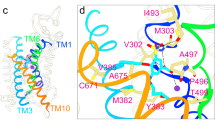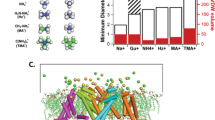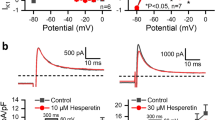Abstract
THE concentration of free cardiac glycosides in the blood of patients treated for heart failure ranges between 1 and 5 nM (refs 1–3). Studies on human heart slices have shown that, within this range of concentrations, digitoxin does not inhibit the sodium pump but does stimulate 42K uptake3. Similar observations have been made with isolated guinea pig atria: low concentrations of ouabain (near 1 nM) stimulate 42K uptake whereas higher concentrations inhibit it4. These results are in agreement with recent electrophysiological observations on Purkinje fibres showing that low doses of ouabain produce changes in the K gradient that reflect stimulation of the sodium pump5. It has also been observed that the stimulation of the sodium pump by ouabain is associated with a positive ionotropic effect6. Earlier studies with guinea pig atria4 and other preparations7–9 showed that the binding of ouabain occurs on non-specific and specific sites. The specific binding is fitted by a Langmuir curve with an equilibrium constant close to that estimated by measuring the inhibition of the sodium pump. We report here the existence of a binding with a higher affinity associated with the stimulation of the sodium pump.
This is a preview of subscription content, access via your institution
Access options
Subscribe to this journal
Receive 51 print issues and online access
$199.00 per year
only $3.90 per issue
Buy this article
- Purchase on Springer Link
- Instant access to full article PDF
Prices may be subject to local taxes which are calculated during checkout
Similar content being viewed by others
References
Grahame-Smith, D. G., and Everest, M. S., Br. med. J., 1, 286–289 (1969).
Lukas, D. S., Ann. N.Y. Acad. Sci., 179, 338–361 (1971).
Godfraind, T., Archs int. Pharmacodyn. Ther., 206, 384–388 (1973).
Godfraind, T., and Lesne, M., Br. J. Pharmac., 46, 488–497 (1972).
Cohen, I., Daut, J., and Noble, D., J. Physiol., Lond., 260, 75–103 (1976).
Ghysel-Burton, J., and Godfraind, T., Br. J. Pharmac., 55, 249P (1975).
Baker, P. F., and Willis, J. S., Nature, 226, 521–523 (1970).
Brading, A. F., and Widdicombe, J. H., J. Physiol., Lond., 238, 235–249 (1974).
Godfraind, T., Biochem. Pharmac., 24, 823–827 (1975).
Lamb, J. F., and McCall, D., J. Physiol., Lond., 225, 599–617 (1972).
Colqhoun, D., Drug Receptors (edit. by Rang, H. P.,) 149–182 (Macmillan, London and Basingstoke, 1973).
Cavieres, J. D., and Ellory, J. C., Nature, 255, 338–340 (1975).
Glynn, I. M., and Karlish, S. J. D., J. Physiol., Lond., 256, 465–496 (1976).
Godfraind, T., J. Physiol., Lond., 260, 21–35 (1976).
Author information
Authors and Affiliations
Rights and permissions
About this article
Cite this article
GODFRAIND, T., GHYSEL-BURTON, J. Binding sites related to ouabain-induced stimulation or inhibition of the sodium pump. Nature 265, 165–166 (1977). https://doi.org/10.1038/265165a0
Received:
Accepted:
Published:
Issue Date:
DOI: https://doi.org/10.1038/265165a0
This article is cited by
-
Role of Na+‐K+ ATPase in cyclic GMP‐mediated relaxation of canine pulmonary artery smooth muscle cells
British Journal of Pharmacology (1997)
-
Solubilization and characterization of a ouabain-sensitive protein from transverse tubule membranejunctional sarcoplasmic reticulum complexes (TTM-JSR) in cat cardiac muscle
Experientia (1989)
-
The dual effects of ouabain on45Ca2+ transport and contractility in adult rat ventricular myocytes
Pflügers Archiv - European Journal of Physiology (1988)
-
Sodium pump: Birthday present for digitalis
Nature (1985)
-
Autoregulation of the electrogenic sodium pump
Cellular and Molecular Neurobiology (1984)
Comments
By submitting a comment you agree to abide by our Terms and Community Guidelines. If you find something abusive or that does not comply with our terms or guidelines please flag it as inappropriate.



